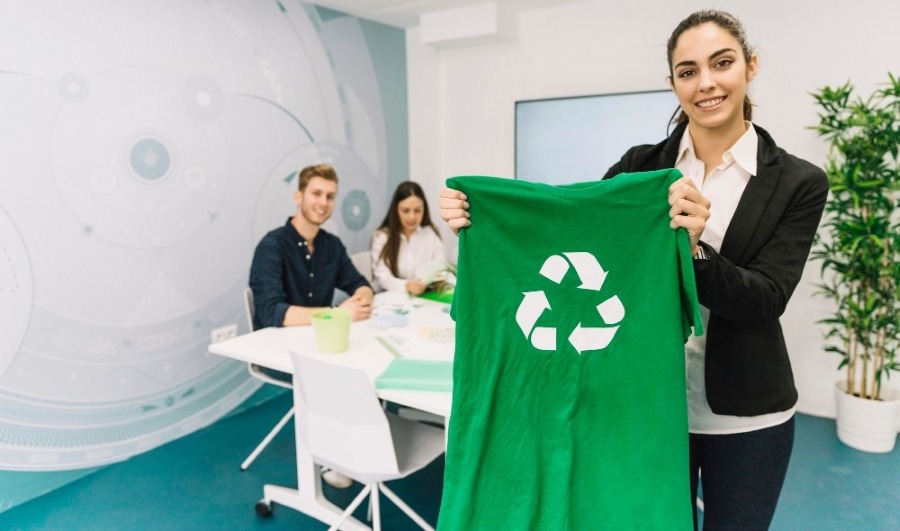Activewear and the Green Machine: Embracing Circular Practices for a Sustainable Future

Table of Contents
ToggleHow Activewear Brands Can Embrace Circular Practices
The fashion industry, particularly the activewear segment, is undergoing a significant transformation towards sustainability. As consumers become increasingly environmentally conscious, they are demanding more responsible practices from their favorite brands. This shift is propelling activewear brands to adopt circular practices, which aim to minimize waste and maximize the lifecycle of products through methods like recycling, upcycling, and responsible manufacturing.
What is Circular Fashion That Relates to Activewear manufacturing?
Circular fashion is a regenerative system in which garments are designed and produced with the intention of being reused, recycled, or composted. Unlike the traditional linear model of “take, make, dispose,” circular fashion emphasizes a closed-loop system. This approach involves:
Designing for Longevity: Creating products that are durable and timeless.
Using Sustainable Materials: Incorporating recycled or biodegradable fabrics.
Implementing Take-Back Schemes: Encouraging customers to return used products for recycling or upcycling.
Promoting Repair and Resale: Facilitating easy repair of products and creating resale platforms.
Why Embrace Circular Practices?
Environmental Impact: Circular practices significantly reduce waste, conserve natural resources, and lower carbon footprints. By reusing materials and extending product lifecycles, activewear brands can play a crucial role in mitigating environmental degradation.
Consumer Demand: Today’s consumers, especially millennials and Gen Z, prioritize sustainability in their purchasing decisions. Brands that adopt circular practices can attract and retain these eco-conscious customers.
Brand Loyalty: Embracing sustainability enhances brand reputation and fosters customer loyalty. Consumers are more likely to support and recommend brands that align with their values.
Steps to Embrace Circular Practices
1. Sustainable Materials
Recycled Fabrics: Use materials like recycled polyester or nylon, which reduce reliance on virgin resources.
Organic Textiles: Incorporate organic cotton or bamboo, which have lower environmental impacts compared to conventional materials.
Innovative Alternatives: Explore new materials like mushroom leather or algae-based textiles, which offer sustainable options without compromising performance.
2. Design for Longevity
Quality Over Quantity: Focus on creating high-quality products that withstand wear and tear.
Timeless Designs: Develop styles that are not bound by seasonal trends, encouraging longer use.
Modular Designs: Create products with interchangeable parts, making it easier to repair and update them.
3. Recycling Programs
Take-Back Schemes: Establish programs where customers can return their old activewear for recycling.
Partnerships with Recycling Firms: Collaborate with organizations that specialize in textile recycling to ensure proper disposal and reuse of materials.
In-Store Recycling Bins: Provide convenient drop-off points for customers to recycle their worn-out activewear.
4. Transparency
Clear Labeling: Offer detailed information about the materials and processes used in your products.
Supply Chain Visibility: Ensure transparency throughout the supply chain, from raw material sourcing to finished product.
Communication: Regularly update customers on your sustainability efforts and progress.
Benefits of Circular Practices
1. Cost Savings
Reduced Material Costs: Using recycled materials can lower costs associated with virgin resources.
Waste Management: Circular practices reduce the volume of waste, leading to lower disposal costs.
Energy Efficiency: Sustainable manufacturing processes often use less energy, reducing overall production costs.
2. Market Differentiation
Unique Selling Proposition: Circular practices can set your brand apart in a competitive market.
Brand Storytelling: Highlighting your commitment to sustainability can attract media attention and boost brand visibility.
Customer Engagement: Engaging customers in your sustainability journey fosters deeper connections and loyalty.
3. Regulatory Compliance
Future-Proofing: Stay ahead of tightening regulations focused on environmental sustainability.
Certifications and Standards: Obtain certifications such as GOTS (Global Organic Textile Standard) or Cradle to Cradle, which validate your sustainability claims.
Risk Mitigation: Reduce the risk of regulatory fines and penalties by adhering to sustainable practices.
Adopting circular practices is more than just a trend; it is a strategic move for activewear brands aiming for long-term success. By reducing environmental impact, meeting consumer demand, and enhancing brand reputation, circular fashion offers a holistic approach to sustainability. Brands that embrace these practices not only contribute to a healthier planet but also position themselves as leaders in the future of fashion.
- Facebook
- Twitter
- Linkedin
- Whatsapp





